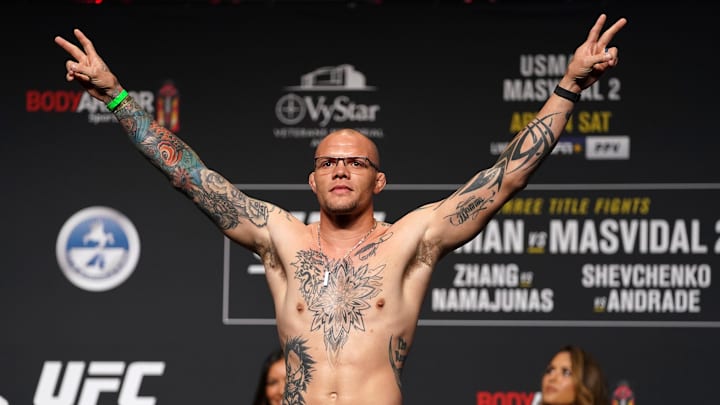What does the MMA weight class light heavyweight mean?
Much like gloves and shorts are a requirement for any athlete who wishes to step foot into the Octagon, weight classes are just as fundamental to MMA. They not only separate athletes by size, which removes the uncomfortable viewing of a behemoth of an athlete against a much smaller competitor but also makes the sport fair.
It allows athletes to focus on a specific weight limit that suits them best if they wish to become world champions and sell-out arenas. While heavyweight is often lauded as the most exciting MMA weight class given the sheer size of the fighters and the fact that all it takes one punch to finish a night, it has actually been the light heavyweight division across different promotions that has often carried MMA companies to the limelight.
While not as big as their heavyweight counterparts, light heavyweight competitors are still huge athletes who throw a lot of weight around. The bottom limit for the weight class is 186 pounds, although most if not all athletes competing tend to cut weight until they reach the upper limit, 206 pounds for non-title fights, and 205 for championship bouts.
They may be a whole 60 pounds lighter than those at the upper echelon of the heavyweight scale but don’t be mistaken. Devastating knockouts are just as common in this division and the relatively lower weight means that we tend to see much more well-rounded MMA practitioners at light heavyweight. In fact, some of the world’s best have found their home in the 205 division and it could be argued that in the mid-2010s, no division was more stacked with talent than the UFC’s light heavyweight division.
Jon Jones is one of the most famous UFC light heavyweights of all-time
The man who ruled over this division during that time was non-other than future UFC Hall of Famer Jon Jones. Despite not always playing by the rules and often getting into high-profile controversies outside the cage, Jones’ reign as light heavyweight champion might go down as the greatest reign in MMA history, not just the UFC.
His resume is littered with some of the best 205ers to ever lace a pair of gloves and it wasn’t just the names but the manner in which he won that has placed him firmly into MMA’s greatest of all-time conversation. His reign includes a UFC-record 14 title fight wins, as well as defending his belt eight times in a row, placing him fourth all-time in that category. Whilst Jones is clearly the greatest to do it at light heavyweight, the number of fighters in this weight class who have made a huge impact on MMA cannot be understated.
Wanderlei Silva made violent displays a norm during his reign as PRIDE’s middleweight champion (same weight boundaries as light heavyweight), Daniel Cormier is one of the UFC’s greatest fighters, and who can forget the legendary rivalry between Tito Ortiz and Chuck Liddell which put the UFC on the map given how personal and intense their feud became over the title.
Although many of these legends are now long gone from the sport, that doesn’t mean that light heavyweight has become stale. An exciting new UFC champion was crowned in January after Jamahal Hill defeated Glover Teixeira, and along with former champion Jirí Porcházka, new up-and-coming talent in Magomed Ankalaev and Aleksandar Rakíc, it’s safe to say that light heavyweight will continue to be one of the most exciting weight classes in MMA.
